
John Trumbull was an American artist of the early independence period, notable for his historical paintings of the American Revolutionary War, of which he was a veteran. He has been called the "Painter of the Revolution".

Lewis Howard Latimer was an American inventor and patent draftsman. His inventions included an evaporative air conditioner, an improved process for manufacturing carbon filaments for light bulbs, and an improved toilet system for railroad cars. In 1884, he joined the Edison Electric Light Company where he worked as a draftsman.
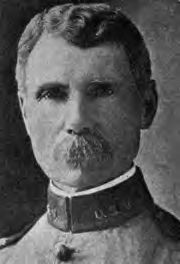
Theodore Schwan was a Union Army officer during the American Civil War who received the Medal of Honor for his actions at the Battle of Peebles' Farm. He also served with distinction during the Spanish–American and Philippine–American Wars.
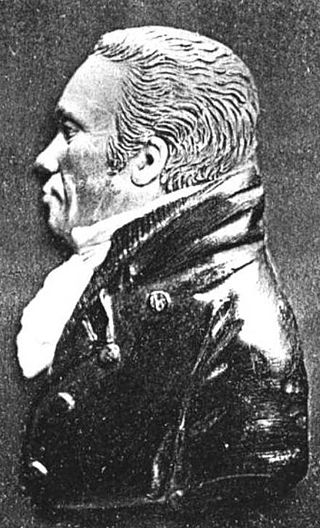
Thomson Joseph Skinner was an American politician from Williamstown, Massachusetts. In addition to service as a militia officer during the American Revolution, he served as a county judge and sheriff, member of both houses of the Massachusetts legislature, U.S. Marshal, and member of the United States House of Representatives. He served for two years as Treasurer and Receiver-General of Massachusetts, and after his death an audit showed his accounts to be deficient for more than the value of his estate, which led to those who had posted bonds on his behalf having to pay the debt.
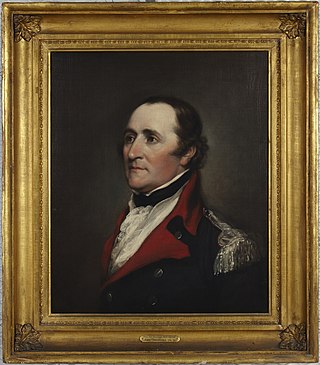
Ebenezer Huntington was an officer in the Continental Army during the American Revolutionary War, and afterwards United States Representative from Connecticut.
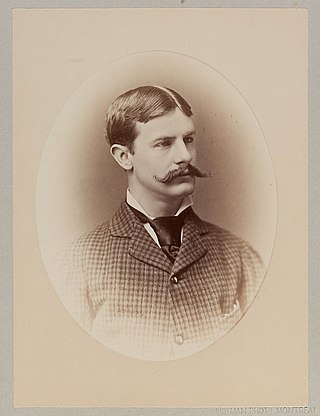
Edmund March Wheelwright was one of New England's most important architects in the late nineteenth and early twentieth centuries, and served as city architect for Boston, Massachusetts from 1891 to 1895.

George Haven, born in New London, Connecticut, on March 27, 1844, was the thirtieth Adjutant General of the State of Connecticut. He was the son of Urbane and Sarah (Rogers) Haven. Both were members of old Connecticut families. Haven acquired his education early in public schools of New Haven. He loved books, but with the rumors of war he joined the National Guard at the age of 17. After being discharged on November 19, 1864, Haven returned home to New London and worked for the Wilson Manufacturing Company, with which he was connected for 18 years. He left the employ of the Wilson Company at around 1886, and the next year went to work for the Quinnipiac Company. In 1888 he was appointed Chief of police of New London. Haven served at the City of New London for six years as Alderman and Councilman.

John Kemble Tarbox was a U.S. Representative from Massachusetts.

Hartwell and Richardson was a Boston, Massachusetts architectural firm established in 1881, by Henry Walker Hartwell (1833–1919) and William Cummings Richardson (1854–1935). The firm contributed significantly to the current building stock and architecture of the greater Boston area. Many of its buildings are listed on the National Register of Historic Places.

Cummings and Sears was an architecture firm in 19th-century Boston, Massachusetts, established by Charles Amos Cummings and Willard T. Sears.

Rufus G. Russell (1823-1896) was an architect working from New Haven, Connecticut.

Andrew Henry Embler was an officer in the Union Army during the American Civil War. He received the country's highest award for bravery during combat, the Medal of Honor, for his action during the Battle of Boydton Plank Road in Virginia on October 27, 1864. He would later serve as the Connecticut Adjutant General for two years.

William Petit Trowbridge was a mechanical engineer, military officer, and naturalist. He was one of the first mechanical engineers on the faculties of the University of Michigan, the Sheffield Scientific School of Yale, and the Columbia School of Mines. He had a brief military career after graduating from West Point and later served as Adjutant General for the State of Connecticut from 1873 to 1876. During his career as a surveyor on the American Pacific coast he collected thousands of animal specimens, several of which now bear his name.
Elihu William Nathan Starr, born in New Haven, Connecticut, on August 10, 1812, was the ninth Adjutant General of the State of Connecticut. He was later elected to the position of town clerk for the City of Middletown. He also served as treasurer and Judge of Probate
William Porter Burrall was an American politician and railroad executive.
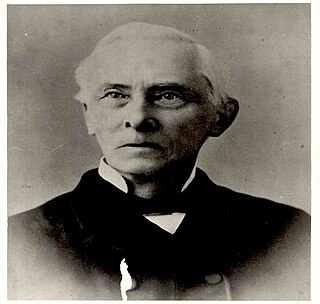
John C. Hollister, born in Manchester, Vermont on June 2, 1818, was the tenth Adjutant General of the State of Connecticut. From 1850 to 1865 he was Justice of the Peace and as such Acting Judge of the City Court of New Haven, and served as clerk of the state senate in 1848. He was a superintendent of the Sunday School of St. Paul's Episcopal Church in New Haven, as well as treasurer of the parish.
Stephen R. Smith was born in Whitneyville, Connecticut, and was the twenty-fourth Adjutant General of the State of Connecticut. He was an active leader of the Republican Party; he served as an alderman and a councilman. He was also a Grand Marshal at the Grand Lodge of the State.
Frederick E. Camp, was born in Durham, Connecticut on July 1, 1832, was the twenty-fifth Adjutant General of the State of Connecticut. He was a treasurer of the soldier's hospital board. He also worked in the office of Boston and New York Air line Railroad Company at New Haven, Connecticut. Camp also became secretary and treasurer of the Middletown Gas Light Company, which he held until he died. Camp was a republican and a member of the state central committee from 1884 to 1888. In 1877 until 1881 he was a city clerk and treasurer of Middletown, Connecticut.

Edward Elias Bradley was the twenty eighth Adjutant General of the State of Connecticut. Bradley served as president of the Boston Buckboard and Carriage Company. He also headed the News Publishing Company. Bradley during 1901 to 1903 was the president of the New Haven Chamber of Commerce. He was commissioner of the public parks of New Haven from 1888 to 1901, and in 1910 became the president of the parks commission. Bradley was president of the Governor’s staff Association of Connecticut from 1903 to 1911. Bradley was president of the Defender Monument Association, which raised funds for the defenders monument to commemorate the successful defense of the West River. He was also the president of the Young’s Men Institute. In 1883, Bradley represented the town of Orange, Connecticut in the general assembly. Bradley was a Democrat and introduced and advocated the constitutional amendment for biennial sessions of the Legislature, which was accepted. He was the director of New Haven National Bank and was the director of Quinnipiac Fire Insurance.

Amos DeForest Lockwood (1811–1884) was an American manufacturer and engineer based in Providence, Rhode Island. He was self-trained as a mechanical engineer, and gradually expanded his scope to all areas of textile mill construction. He was a cofounder, in 1882, of Lockwood, Greene & Company, which would become one of the largest engineering firms in the United States in the twentieth century.
















